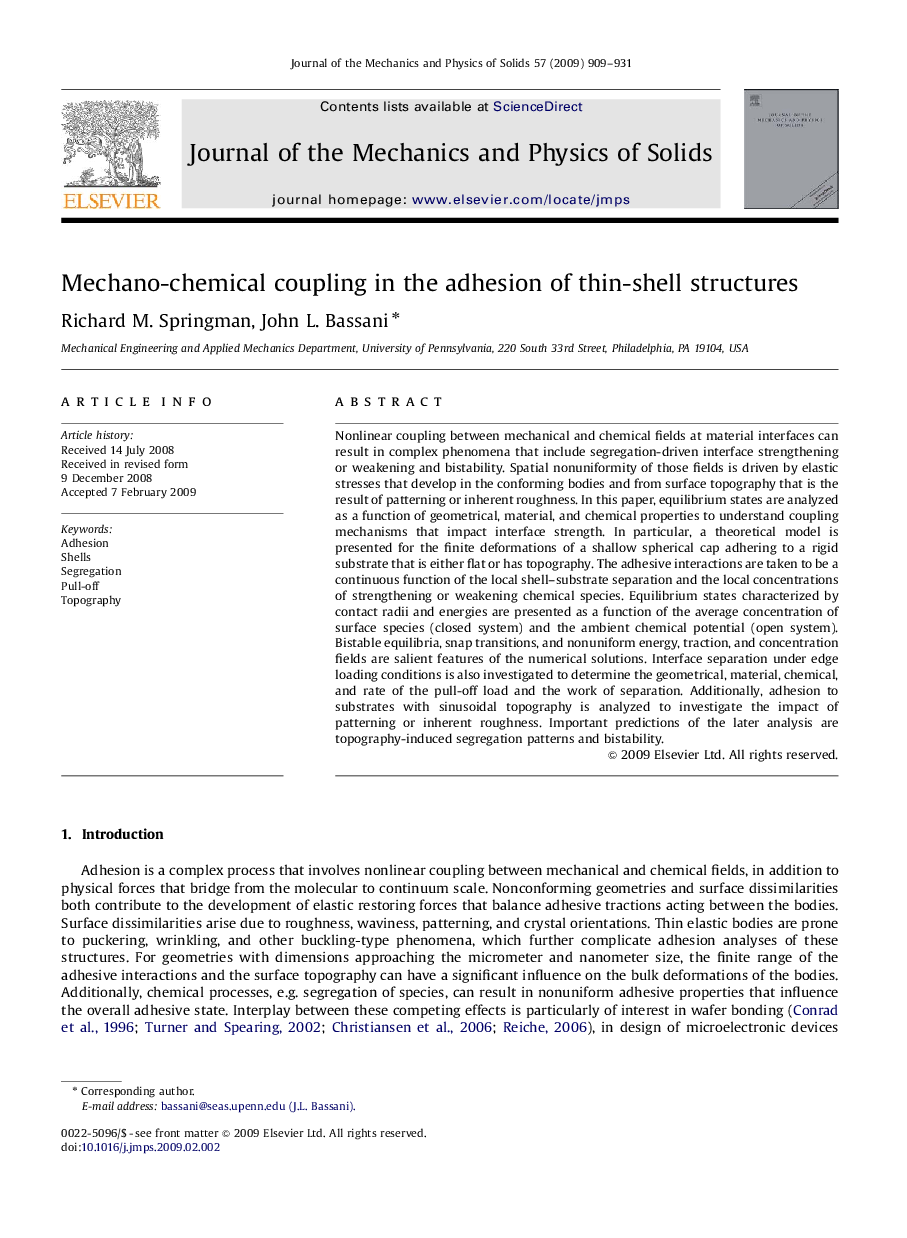| Article ID | Journal | Published Year | Pages | File Type |
|---|---|---|---|---|
| 799811 | Journal of the Mechanics and Physics of Solids | 2009 | 23 Pages |
Nonlinear coupling between mechanical and chemical fields at material interfaces can result in complex phenomena that include segregation-driven interface strengthening or weakening and bistability. Spatial nonuniformity of those fields is driven by elastic stresses that develop in the conforming bodies and from surface topography that is the result of patterning or inherent roughness. In this paper, equilibrium states are analyzed as a function of geometrical, material, and chemical properties to understand coupling mechanisms that impact interface strength. In particular, a theoretical model is presented for the finite deformations of a shallow spherical cap adhering to a rigid substrate that is either flat or has topography. The adhesive interactions are taken to be a continuous function of the local shell–substrate separation and the local concentrations of strengthening or weakening chemical species. Equilibrium states characterized by contact radii and energies are presented as a function of the average concentration of surface species (closed system) and the ambient chemical potential (open system). Bistable equilibria, snap transitions, and nonuniform energy, traction, and concentration fields are salient features of the numerical solutions. Interface separation under edge loading conditions is also investigated to determine the geometrical, material, chemical, and rate of the pull-off load and the work of separation. Additionally, adhesion to substrates with sinusoidal topography is analyzed to investigate the impact of patterning or inherent roughness. Important predictions of the later analysis are topography-induced segregation patterns and bistability.
